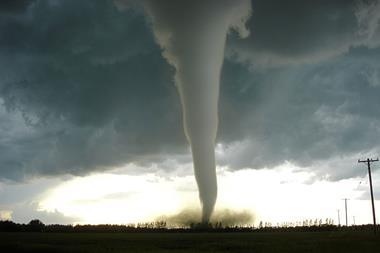Russian heat wave and Haiti earthquake were deadliest disasters last year
Some 373 natural disasters killed over 296,800 people in 2010, affecting nearly 208m others and costing nearly US$110bn, according to the UN.
The top two most lethal disasters -- the 12 January earthquake in Haiti, which killed over 222,500 people, as well as the Russian heat wave in summer, which caused about 56,000 fatalities made 2010 the deadliest years in at least two decades, reported the Centre for Research on the Epidemiology of Disasters (CRED).
“These figures are bad, but could be seen as benign in years to come,” said Margareta Wahlström, Special Representative of the UN Secretary-General for Disaster Risk Reduction. “Unless we act now, we will see more and more disasters due to unplanned urbanization and environmental degradation. And weather-related disasters are sure to rise in the future, due to factors that include climate change.”
“It’s critical for local governments, city leaders and their partners to incorporate climate change adaptation in urban planning,” Wahlström said, stressing that disaster risk reduction was “no longer optional”. “What we call ‘disaster risk reduction’ – and what some are calling ‘risk mitigation’ or ‘risk management’ – is a strategic and technical tool for helping national and local governments to fulfill their responsibilities to citizens.”
Disaster trends for 2010
For the first time, the Americas headed the list of the world’s worst affected continents, where 75% of total deaths were caused by one single event in the Caribbean: the Haiti earthquake.
Europe follows, accounting for nearly a fifth of the year’s total deaths from disasters brought on by the Russian heat wave. Other extreme climate events experienced by Europe include Storm Xynthia in the west (February 2010), heavy flood in France (June 2010), and the extreme winter conditions all over Europe in December 2010.
Asia experienced fewer disaster deaths that the Americas and Europe in 2010 – representing 4.7% of total mortality that year – but remains the highest affected continent. Some 89% of all people affected by disasters in 2010 lived in Asia, according to CRED.
Of the list of top 10 disasters with the highest death counts, five occurred in Asia – China, Pakistan, and Indonesia.
Earthquakes killed 2,968 people in China in April and 530 people in Indonesia in October. From May to August, floods killed 1,691 people in that country, and a further 1,765 were killed by mudslides, landslide or rock fall triggered heavy rains and floods in August.
Nearly 2,000 people were killed by massive floods in Pakistan that covered one-fifth of the land mass, due to rains which pelted the northwest from July to August.
Floods and landslides during the summer in China are estimated to have cost US$1bn, the Pakistan floods US$9bn, and the Haiti earthquake US$8bn.
But the costliest event in 2010 was the Chilean earthquake in February, which cost US$30bn in disaster damage. And yet, economic losses in 2010 still do not surpass that of 2005, where damage from Hurricane Katrina, Rita and Wilma alone amounted to US$139bn. In 2008, the earthquake in Sichuan, China, inflicted $86bn in damage, bringing the total for that year to about US$200bn.
“Preparedness at all levels needs to be reviewed and overhauled,” said Ms. Guha-Sapir. “The year 2010 has shown that we should do better not only for relief response but also for preparedness.”



















